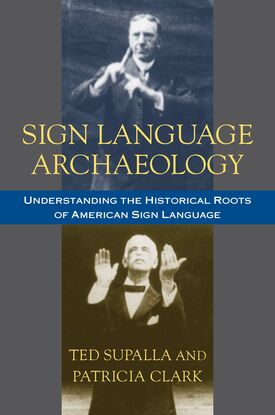
Sign Language Archaeology
Understanding the Historical Roots of American Sign Language
1st Edition
This study investigates the origins of American Sign Language, its evolution from French Sign Language, and evidence about the word formation process of ASL, including data from 19th and early 20th century dictionaries.
Description
This engrossing study investigates the infancy of American Sign Language (ASL). Authors Ted Supalla and Patricia Clark highlight the major events in ASL history, revealing much of what has not been clearly understood until now. According to tradition, ASL evolved from French Sign Language. The authors analyze the metalinguistic assumptions of these early accounts and also examine in depth a key set of films made by the National Association of the Deaf (NAD) between 1910 and 1920. Designed by the NAD to preserve classic ASL, the films feature 15 sign masters, the model signers of that time. In viewing these films, the authors discovered that the sign masters signed differently depending on their age. These variations provide evidence about the word formation process of early ASL, further supported by data collected from dictionaries of the 19th and early 20th centuries.
By tracing the writings of selected individuals, this study reconstructs the historical context for early ASL grammar. It describes the language used in each century and how it changed, and focuses on the rediscovery of the literary legacy of the Deaf American voice. Sign Language Archaeology reveals the contrast between folk etymology and scientific etymology and allows readers to see ASL in terms of historical linguistics.
Ted Supalla is Professor in the Department of Neurology at Georgetown University in Washington, DC.
Patricia Clark, a certified ASL/English interpreter, is an adjunct faculty member in the Program in American Sign Language at the University of Rochester in Rochester, New York.
Reviews
"This book provides an informative and compelling overview of early ASL that contributes to greater awareness and understanding of historical linguistics, literature, and sign language methodology used in deaf education. To scholars interested in the field of Deaf Studies and its related fields, this book is outstanding for its wealth of resources in research and teaching."
— Journal of Deaf Studies and Deaf Education